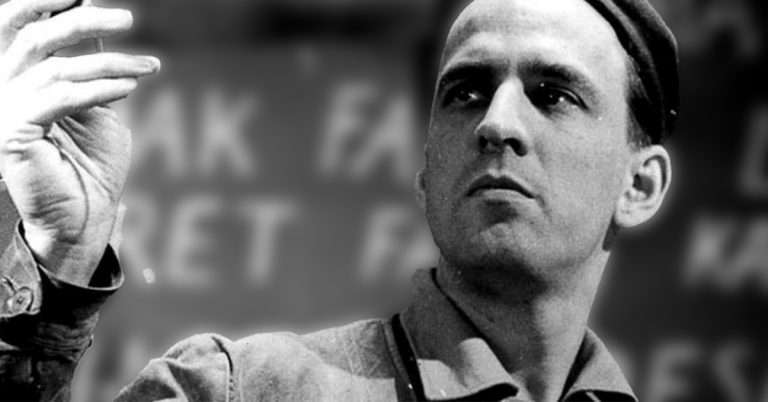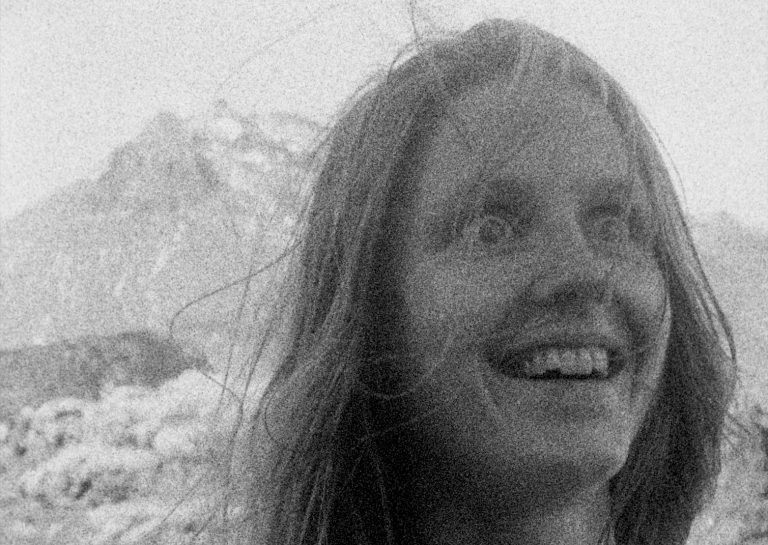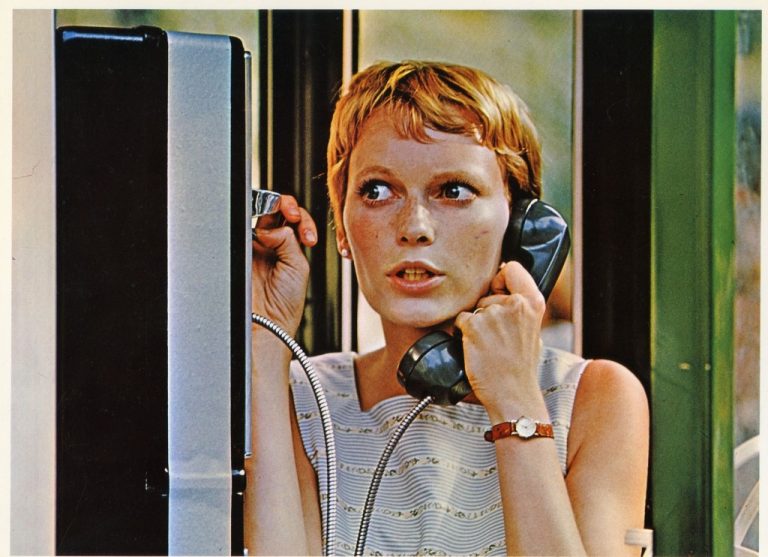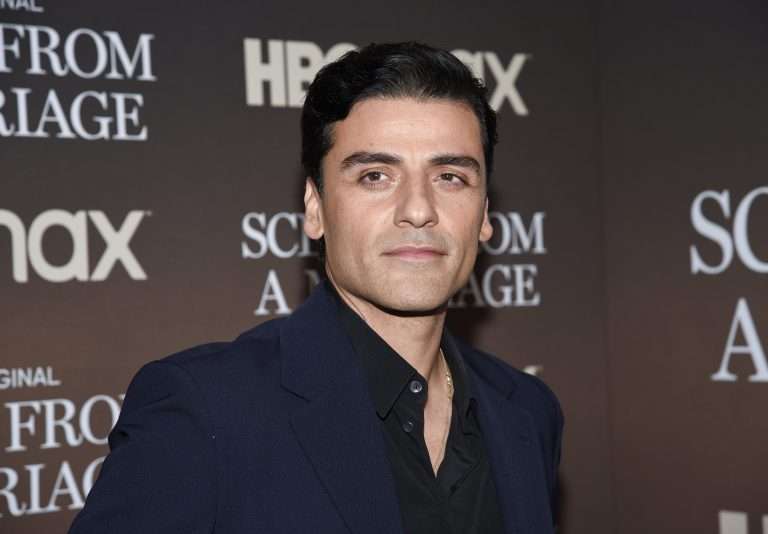Martin Scorsese has made it known, in programming for Turner Classic Movies (TCM) and for Letterboxd, that one of the central influences for his 2023 epic “Killers of the Flower Moon” was William Wyler’s 1949 drama “The Heiress.” “The Heiress” is actually a touchstone film for him, as he mentions that it affected him deeply when he first saw it at age 10. It also served as an inspiration for his adaptation of Edith Wharton’s “The Age of Innocence” (1993).
“The Heiress” – which, like “Killers” and “Age of Innocence,” is a literary adaptation – draws on a favorite device of Scorsese’s that makes so many of his films memorable: character ambiguity. Films with highly complex characters and will-they-or-won’t-they plotlines are among those most likely to remain with us long after the final frame as we ponder their just-shy-of-satisfying resolutions.
“The Heiress” hinges on a construction that Scorsese recreated in “Killers” – a group of core characters who can be interpreted in vastly different ways dependent on conflicting and subtle items of evidence. The key relationship in both films is also an echo – having to do with betrayal and forgiveness in romantic love. The women ultimately make similar decisions but with somewhat different attitudes and motivations. Mollie Kyle chooses to divorce Ernest out of a deeply felt personal integrity – which he refuses to step up and match – and The Heiress’s Catherine Sloper arrives at her suitor’s rejection, at least partially out of bitterness and revenge.
Whether in “Age of Innocence” or “Killers,” this dynamic is one that Scorsese has returned to multiple times, and more broadly, the theme of sin and absolution pervades his filmography, especially his collection of crime pictures. He explains as a TCM guest programmer that within the narrative of “The Heiress,” the tension “is pulled tighter and tighter like a bowstring” until it becomes “excruciating” – but what precisely about the film produces this effect? We, as the audience, experience a similar type of vicarious discomfort in regret-soaked films like Jacques Demy’s “The Umbrellas of Cherbourg” (1964) and its correspondent “La La Land” (2016, Damien Chazelle).
My belief is that the maddening psychological dynamics in “The Heiress” and, to a certain extent, “Killers of the Flower Moon” are managed because each of its core characters can claim both a positive and negative interpretation. These impressions, throughout the film, collide, commingle, and interact. Scorsese, like Wyler, is an appreciator of a good literary adaption with a sense of subtlety and substance in the story. It takes a master to be able to render the layered psychological dynamics of a quality novel and translate that interiority to the screen – and perhaps, in these cases, I should say “masters” because the acting must be excellent as well.
“The Heiress” is essentially an adaptation of Henry James’s novel Washington Square by way of a 1947 play also adapted from the book. Playwrights Ruth and Augustus Goetz wrote the screenplay after star Olivia de Havilland herself approached Wyler about turning their play into a film. The plot centers around a young 19th-century heiress and only child, Catherine Sloper, who is naïve and introverted yet manages to attract the attention of a handsome man, Morris Townsend, who recently came to town. Catherine’s father, who is at times emotionally abusive and unkind to her, steps in to attempt to prevent the match because he perceives that Morris is after Catherine’s money. The question at the center of the film is: does Morris really love Catherine? And even if not, would she achieve some measure of happiness by marrying him?
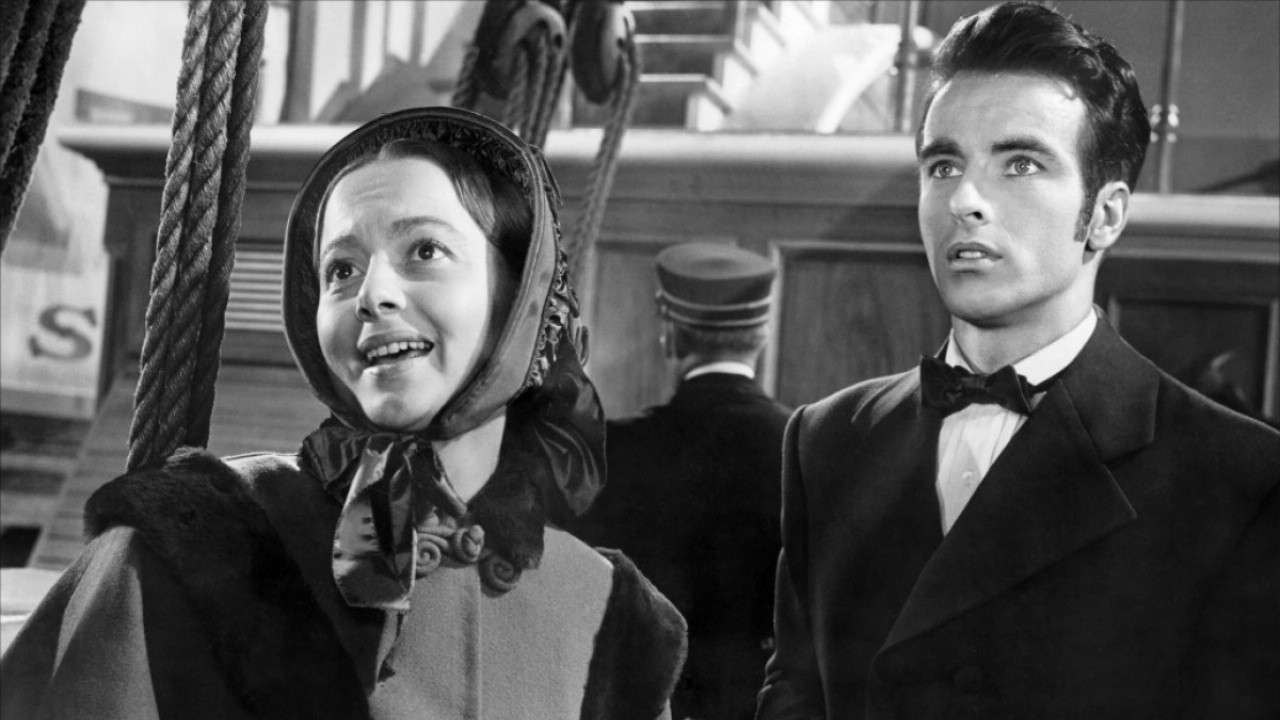
The courtship between them starts innocently enough but quickly generates conflict in the Sloper family. Catherine begins to stand up to her father, Dr. Austin Sloper, by defending Morris and insisting on going ahead with their engagement; Dr. Sloper then threatens to disinherit her to block Morris from frittering away their family wealth. Swept off her feet by the drama of it all, Catherine relays this to Morris and tells him that she’d happily live in poverty all her life if it meant they could be together.
She acts to spite her father, who, in a harsh attempt to get through to her, has said that money is the only reason a man with Morris’s charms would pursue a wallflower like her. Telling her that he’s going to get things situated so that they can elope, Morris flees after Catherine’s financial announcement, completely ghosting her – and making it devastatingly obvious that Dr. Sloper was likely right all along. This brings us to about the three-quarter point of the film. There are already so many questions, and it’s unclear who we’re supposed to love and who to hate.
For one thing, Ralph Richardson, in his role as Dr. Sloper, has moments of repugnance but just as many moments of warmth. A plotline unfolds where he investigates Morris’s provenance and the reason for his focus on Catherine. It turns out that Morris received his own inheritance early and blew through it on a European idyll – furthermore, at a dinner at the Sloper home, he makes it clear that he isn’t exactly keen to work. There’s plenty to support Dr. Sloper’s position, and it’s arguable, at least some of the time, that he has Catherine’s best interests at heart.
Even so, he demeans his daughter for her spinsterish love of embroidery, makes fun of her social awkwardness, and forever puts her in competition with her own late mother, who, by Dr. Sloper’s estimation, was the perfect woman. When he finally lowers the boom on Catherine by declaring that apart from her wealth, she is essentially unlovable, he makes a grave miscalculation that contributes to the film’s conclusion.
Olivia de Havilland as Catherine Sloper has an intriguing and nearly baffling interplay with Morris Townsend, as portrayed by matinee idol Montgomery Clift. Supposedly, Clift and de Havilland clashed in their performance styles on set, and it only adds to the undertone of the story that de Havilland – as always – is classical, dignified, and elegant in her demeanor while Clift has a cavalier freshness that wouldn’t be out of place in cinema even today.
Morris’s character is similarly confusing. It can’t be denied that he’s hard-pressed for cash and sees that as a key attraction in pursuing Catherine, but he also isn’t unkind to her. He treats her tenderly, with solicitation, such as in one heartwarming episode where he serenades her on the piano, offering feelings that seem nearly genuine (mixed signals aren’t a purely modern development, apparently).
As if this weren’t enough, Catherine is forever shuttled to the right and the left by a meddling aunt, Lavinia Penniman (Miriam Hopkins), who seems to intuit, at the bottom, that Morris is a user but eggs the relationship along because she feels it’s Catherine’s best chance at practical happiness. A lot, certainly, to fall on Olivia de Havilland’s Catherine Sloper. But it’s what happens after Morris’s rejection that nudges the film into the realm of the exceptional. Catherine undergoes her own character trajectory that adds a sense of dimension and complication to her former pure-heartedness, and we’re left wondering: a bridge too far? Does Catherine become vindictive, or is her ultimate decision reflective of empowerment?
The corresponding conclusion in “Killers of the Flower Moon” is a bit more clear-cut. We see that Mollie has certain terms for Ernest – if he can come fully clean about the poisoned insulin injections, she’ll consider taking him back. In transcendent acting from Lily Gladstone, we can see in her eyes that part of her wants to take him back; despite everything, there’s still clearly love between them. But Ernest cannot be honest. He cannot meet her with integrity and understanding. Thus, he makes his choice, and she makes hers.
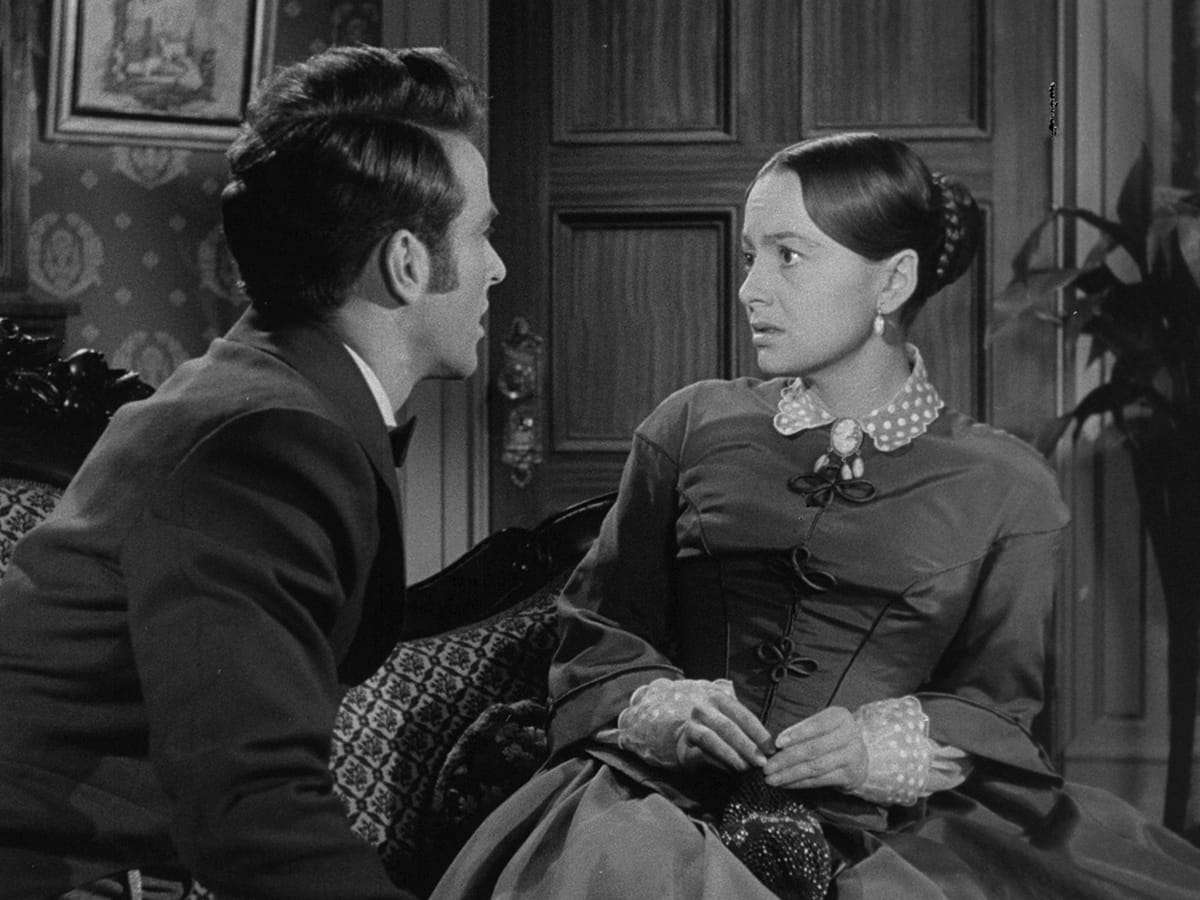
“The Heiress,” however, leaves us grieved in the wrenching dynamics that seem to boomerang between the denouement’s players. Catherine, after Morris jilts her, grows up fast. Wounded by the callous treatment of both men in her life, she estranges herself from her father, even up to his death, and becomes cold, elegant, dignified, and fashionable. She develops an entirely new bearing as a woman of independence and self-possession. One evening, Aunt Penniman comes home and tells Catherine that she’s seen Morris. After evincing a touch of fear and shock, Catherine reacts in disgust and scolds her aunt for attempting to maneuver her into a reconciliation. But it’s too late! Ever the meddler, Aunt Penniman has allowed Morris to follow her home.
We are thrown into a trainwreck – albeit a highly choreographed trainwreck – of conflicting drives and situational irony. Morris enters after a slow zoom toward Catherine’s face, her former softness flickering over it as she listens to his voice at the door. The last thing we see in the frame is a brief flash of resolve and a sense of uneasiness as Catherine doesn’t quite know what she’ll do. Morris rattles off a stilted series of overtures and justifications – he’s been thinking of her constantly; he longs to “vindicate” himself; he had only abandoned her because the thought of her foregoing her inheritance for his sake offended his chivalric instincts. Do we believe this? Catherine doesn’t. Hardened, she spits at him the same core that animates the scene from “Killers”: “If you can’t be honest with me, we shall have nothing more to say to each other.”
Undeterred, Morris persists. With eerie calculation, Catherine allows herself to be parried into a fresh plan to elope. As the seconds tick by, it’s becoming more and more unclear: What is the nature of Morris’s feelings? His explanations seem transparent and weak, but a real passion seems to be driving him forward. He seems to care whether Catherine loves him and is inspired by her aloofness. He confesses to Aunt Penniman his joy. As Catherine goes to fetch his years-old “wedding present,” Morris crows that he’s finally, truly home and that Catherine, in her maturity and growth, is “magnificent.” Again, the presentation is highly ambiguous. We almost believe this of him. It’s possible that Morris is incorrigible but essentially good-hearted. He’s spent a few years away, nearly penniless, doing manual labor. He’s grown up a little, himself.
When Catherine returns, Morris accepts a set of ruby buttons with an expression more genuine and more moved by the relationship’s development than anything we’ve seen of him yet. After he leaves to pack his things, Catherine delivers a memorable monologue in which she announces her intention to reject him. Her closing statement is painfully telling: “Yes, I can be very cruel – I have been taught by masters.” As Morris arrives to collect her, the film finishes with a pan of Catherine walking alone and self-satisfied up the Sloper mansion stairs. He bangs and bangs at the bolted door, but to no avail: the woman he once jilted decides that revenge is best served cold.
As viewers, we leave “The Heiress” with more questions than answers. Of course, some will completely concur with Catherine’s final decision, but there’s an equally plausible creeping sense, as she pours out the pain in her heart, that trauma has arrested her better angels. And does Morris love her? We still don’t know. We don’t know if she’ll be happy with her solitary life, and we don’t know if she’d perhaps have been happier had she accepted the imperfect man she still fundamentally loved.
One thing is for certain: the ambiguity managed by Wyler’s direction and the actors’ performances give the film a multidimensional intrigue that lingers in the mind for quite a long time afterward. Films like “The Heiress “and “Killers” are films in which we wrestle with what might have happened if just one event had been different. We wrestle with these films in much the same way we wrestle with our lives. This turn here, that turn there – it’s impossible to figure out how better, or at least different, decisions might have altered certain outcomes. Even though we realize these eddies are futile and unproductive, we’re often powerless against the pangs with which they grip us. As F. Scott Fitzgerald wrote in his Jazz Age masterpiece: “So we beat on, boats against the current, borne back ceaselessly into the past.”

